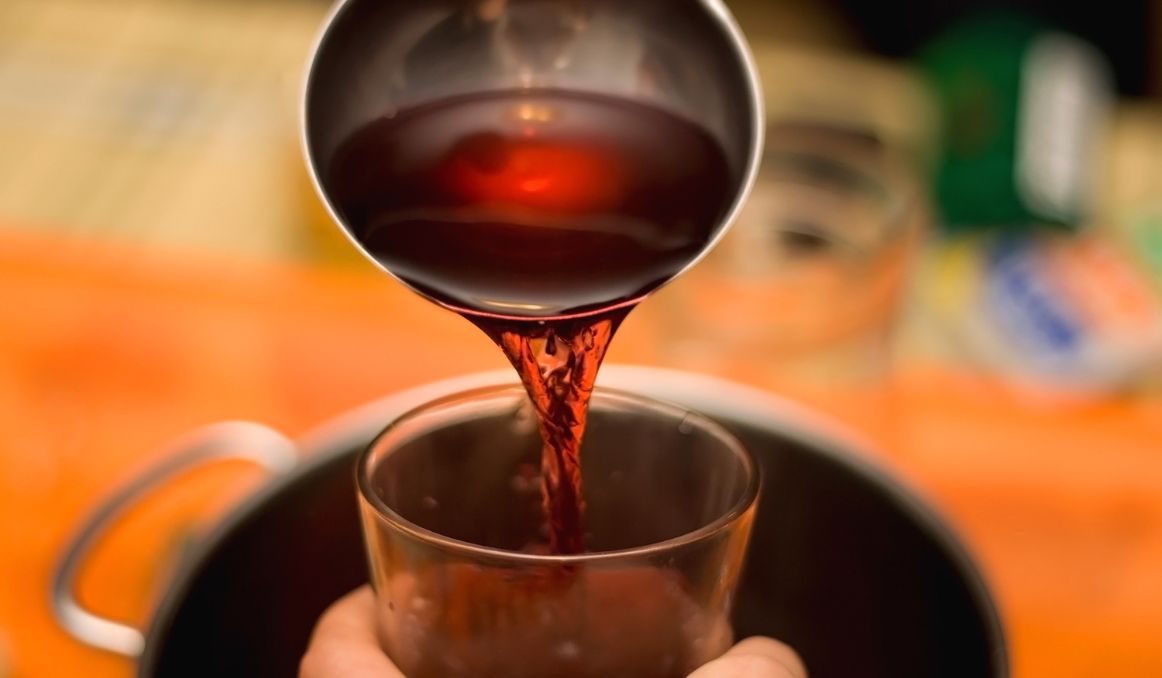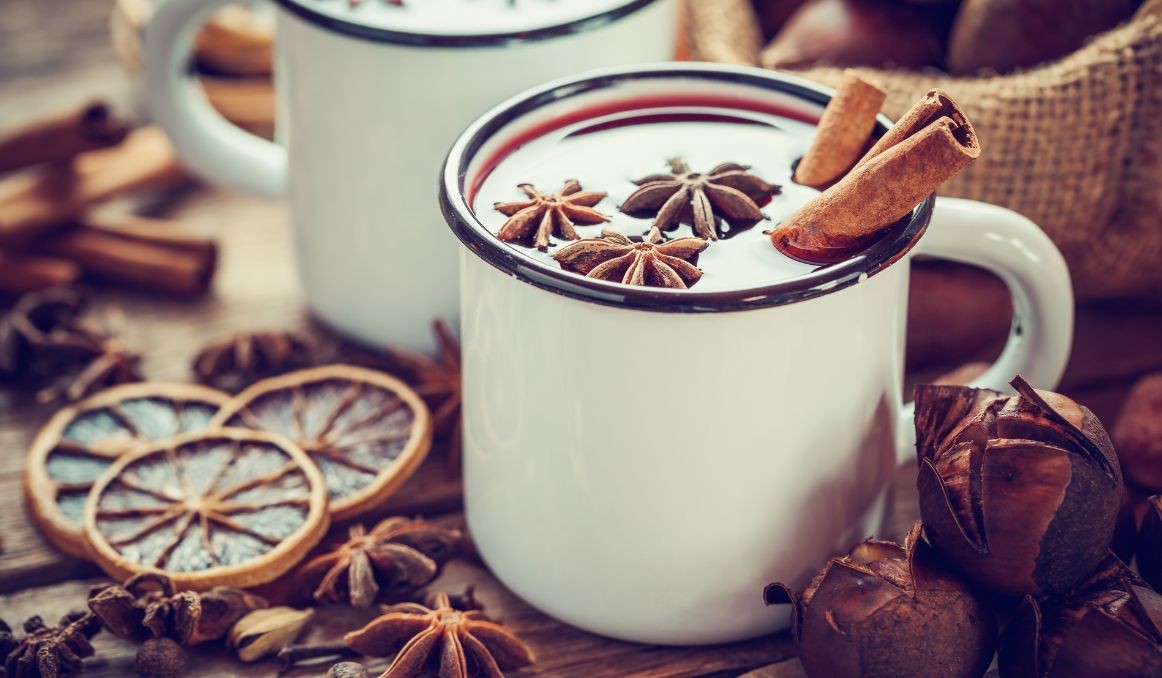Fermenting Spiced Wine: The Magic in the Mix
There are a million and one ways to practice fermenting spiced wine, and it really all depends on your taste.
The history of spiced wine is a fascinating one that has spanned the globe with wide variations and changes in name. Each wine is specific to culture, to region, and to ingredient availability.
So, if you’re interested in learning to ferment spiced wine, you’ve come to the right place.

History of Spiced Wine
Spiced wine originated in Rome around the 2nd century when soldiers sought ways to fortify their bodies against impending winters across the land.
Recall that the Roman Empire was vast, covering most of Europe, North Africa, and the Middle East. Soldiers were trekking for long days and sleeping through cold nights in tents during all their conquering, and they longed for something to warm their cold bodies.
Thus, spiced wine was born.
In its original form, spiced wine was simply wine that had added spices, just as the name implies.
Those spices typically included cloves, cinnamon, orange, and sometimes even vanilla.
Winemakers would add all of these ingredients to a batch of must (basically grape juice), bring it all to a boil, and then allow the yeast to settle in and ferment once the concoction cooled.
Strain the solid ingredients and sediment out, and you’ve got spiced wine.
Because of how large the Roman Empire was, spiced wine and spiced cider obviously spread throughout the entire region, and, as per usual, each region added its own touch.
Sadly, by the Middle Ages, spiced cider lost favor in most countries, except for in Sweden, where it not only remained a traditional drink of winter and then the winter holidays, but also thrived and took on a life of its own.
Over those years, and across those regions, spiced wine has taken on various names like mulled wine and mead, both of which are just different names for the same basic product – fermented fruit juice with spices.
In Sweden, it also developed into something called glogg in the 1600s, from which another variation, called cognac-glogg also was born.
This latter drink also gave birth to the fortification of spiced wine. People began adding liquor to their mulled wine recipes, making it an even more sticky sweet dessert drink, ideal for holiday parties and late night cold gatherings.
Mulled Wine or Spiced Cider?
There is also the question of whether a spiced beverage is wine or cider? The two are so close that it can be hard to tell.
Some would say that wine can only be made with grapes.
Others would argue that any fermented fruit could be considered wine.
There are pomegranate wines and pear ciders, and both can be spiced and fermented, of course.
In the end, it seems that it is most safe to call it wine if you only use crushed fruit juice rather than having to boil the fruit in water to extract its juices and flavors, in which case it should be considered cider.
Modern Spiced Wine
Today, most people looking for spiced wine can simply buy it premade from any well stocked store during the holidays.
Those interested in making their own spiced wine, usually start with an already bottled red wine and then create a sort of tea out of various spices, adding the two together once the tea has cooled enough to not kill the alcohol in the wine.
You can also put your wine in a crockpot, add your desired spices, and cook on low heat for a day before you plan to drink it, which will ensure your wine will not lose its alcohol.
And of course, you can always fortify your mulled wine with a bit of brandy or cognac, or even an orange liqueur, to ensure you and any guests will enjoy a nice pleasant holiday buzz.
Fermenting Spiced Wine

To ferment your own spiced wine, you will simply choose your fruit, crush it into juice, add your spices, bring the entire mixture to a boil, to bring out all the flavors, and then allow the mixture to cool.
Add your yeast, or allow nature to take its course, leaving your container open to the environment, covered with a cheesecloth to keep out unwanted debris, and let wild yeast ferment for you. This approach would be the truly traditional one.
If you’re seeking something more cider-y, you can bring your spices to a boil in a gallon of water and then add that tea to your crushed fruit “must,” then follow your preferred process for fermentation, using either commercial or wild yeast.
Recipes for Spiced Wine
A basic recipe for spiced wine would look like this:
You’ll Need:
- 1 5 Gallon Carboy with airlock and tube
- 3 Gallons of crushed juice of your choice. If you’re looking for red wine, use red wine grapes, not table grapes. You need the extra sugars in wine grapes.
- 5 sticks of cinnamon
- 5 whole cloves
- 2 full oranges, chopped into large pieces, including rind
- 1 full lemon, chopped into large pieces, including rind
- 3 Tablespoons of vanilla extract, or, if you’re feeling fancy, and spendy, 3 vanilla bean pods
- 1 packet of bread yeast
Process:
Combine all of your ingredient and bring to a boil in a large sanitized pot.
Once your must cools, strain it and transfer to your sanitized carboy and gently swirl around to aerate.
Add your packet of yeast and place your airlock on the carboy.
Your wine will begin fermenting within a day and continue to ferment for up to two weeks.
At this point, you can rack your wine, transferring to a secondary vessel and filtering out any remaining sediment and the yeast.
Now, in an ideal world, you will allow your wine to age for at least two months to fully smooth out all of your flavors and aromas.
You can even age it in a cool dark place for the whole year until next year’s holiday season.
Cheers!
Passionate about the fermentation process? So are we! If you’re interested in finding out how you can use our technology to control fermentation and monitor your yeast, save work hours and improve the cost-efficiency of your business, drop us a line at [email protected] or check out our product pages:
- Oculyze BB 2.0 (Better Brewing) Yeast Cell Counter App + Hardware
- Oculyze FW (Fermentation Wine) Yeast Cell Counter App + Hardware
Also, you can now get access to a fully functional demo account to test your yeast via our Web App. Completely free of charge and with no commitment to purchase.


